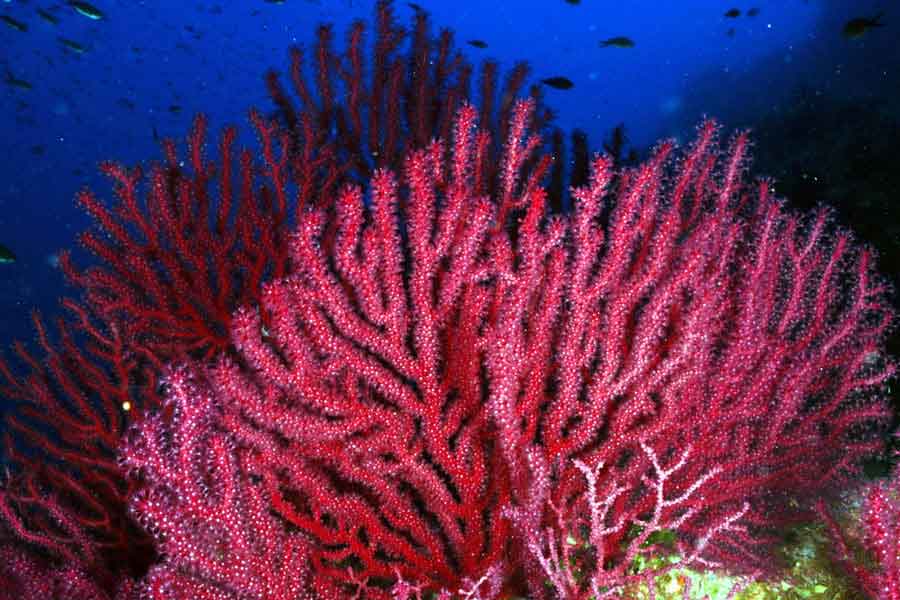
To imagine a gorgonian, one must think with the subtlety of delicacy and the meticulousness of the minuscule. You have to imagine a small fishing net formed by hundreds of individuals less than a centimeter in size. A colony where each member is part of a whole, and that whole is the indispensable sustenance for each individual.
A gorgonian is a cluster of coinciding exactitudes. It must have a strong trunk that allows it to anchor itself to the substrate of the seabed and stand upright, but at the same time, the base must be able to rotate, albeit slowly, to face the current. It needs a certain rigidity to keep the fishing net open so that each individual can feed, but it must also be flexible enough to withstand the current, even during storms, without breaking.
It must open at a high point on the reef so that plankton, preferably fish eggs and planktonic larvae, inevitably reach the eager mouths of each member of the colony. Plankton, precisely because it is plankton (meaning «drifting»), cannot escape the net due to its lack of independent movement, and it falls defenseless before the polyps (poly = many and pos = feet) that close their tentacles upon the presence of the unfortunate prey.
Lastly, preferably, it should be of an intense red color, not as a sign of ostentation, but because as sunlight penetrates the water and is absorbed, red is the first color to disappear. Thus, the gorgonian appears as a bluish-violet color, rendering it invisible to the eyes of predators. Humans, eager to find answers to non-existent questions, will wonder how the coral polyp, barely a centimeter in diameter, knows what color it should be. Questions without answers, in the vast oceanic enigma.
The structure of the gorgonian is woven with great patience, growing only about a centimeter per year, surviving storms and hurricanes. Perhaps it is the tolerance for the passage of time that makes the tissue appear so fantastic. A diver who wishes to admire it will need a magnifying glass to fully enjoy its texture, and when they turn on their flashlight, in most cases, they will be amazed at the most intense red they have ever seen. But no matter how beautiful it may appear in the daylight, its true gala attire comes with the night, when the polyps, in the presence of abundant plankton, open their colorful, vibrant feet, taking advantage of the time when predators sleep.
Gorgonians may be the greatest mischief of coral, tired of seeking forms, splattering the reef with fans, or perhaps it is simply life showing itself beautiful and exuberant, challenging the curious who dare to try to understand the beauty of a beautiful garden of sea gorgonians. As simple as water, as intriguing as the sea that shelters them.
«One cannot defend what one does not love, and one cannot love what one does not know.»

